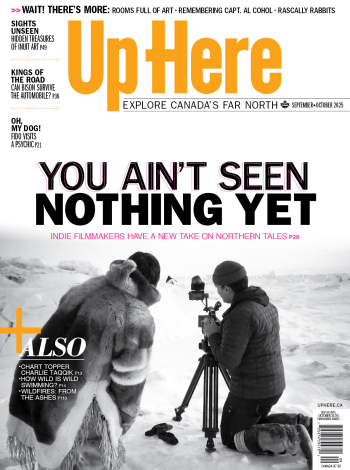Scores of academics and scientists descend on the territories each year to poke, probe, and proselytise. It’s not all the stuff of dry dissertations. Some of it is weird. All of it is wonderful. This issue, Up Here is documenting some of the wildest research happening in the North.
If you look at Axel Heiberg Island from Google Earth you’ll see about 50 white deposits that look like bullseyes—and they aren’t snow. They’re salt diapirs, or salt balloons, that have risen from beneath rock surfaces and formed large white domes that don’t evaporate because of the cold.
In the south, salt diapirs are known as natural markers for oil and gas—but in the North, researchers like Gordon “Dr. Oz” Osinski, director of the Centre for Planetary Science and Exploration, are studying those diapirs to help figure out how life could grow and survive on planets like Mars and Jupiter’s moon Europa (which could harbour the largest volume of habitable water in the solar system).
The six perennial springs that formed on Axel Heiberg thanks to the salt diapirs are the highest known in the world. And because they have such high salt content, they don’t freeze, even in winter when the rest of the high Arctic is a solid ice block. It’s the polar desert environment that makes the high Arctic regions around Baffin and Victoria Islands good analogues for Mars, Osinski says.
By studying diapirs, scientists can work to identify other mineral deposits on planets that may have hosted springs as long as millions of years ago, but have since dried up. By studying the perennial springs, researchers can better understand how microorganisms grow in sub-zero temperatures without the sun.
“There’s a lot of gas bubbling out of these things. It’s that gas methane that many of these organisms are using as their energy source” Osinski says. Micro-life on Mars could use the same kind of source found on that planet’s gaseous surface. “We hope that studying how there is life in these springs will help us understand if there is potentially life on Mars.”
Osinski is also studying glacial and ground water identifiers in the Arctic, so that those same identifiers could be used to locate sub-surface ice water that could be used for drinking water or rocket fuel for human travel on Mars.










